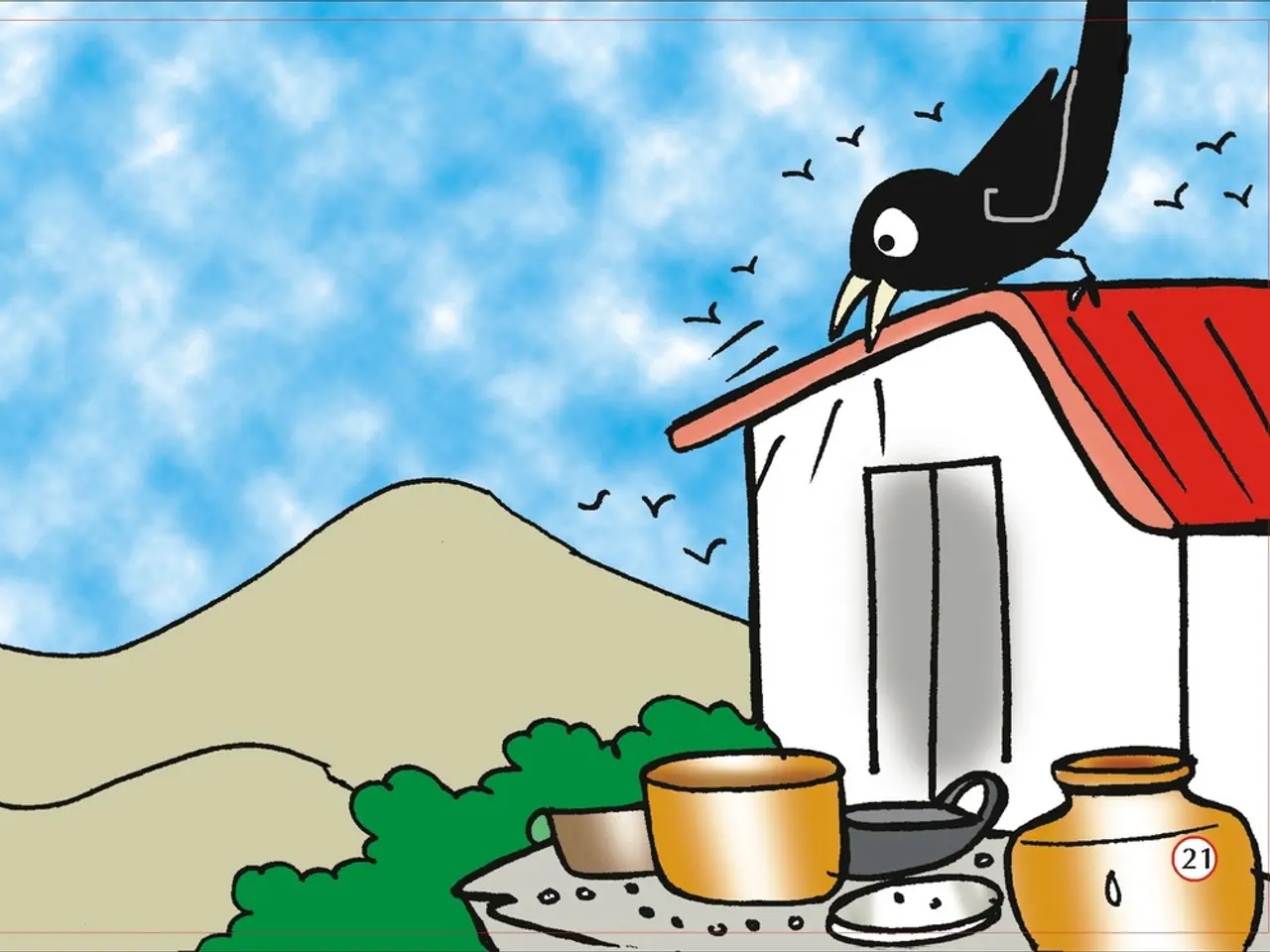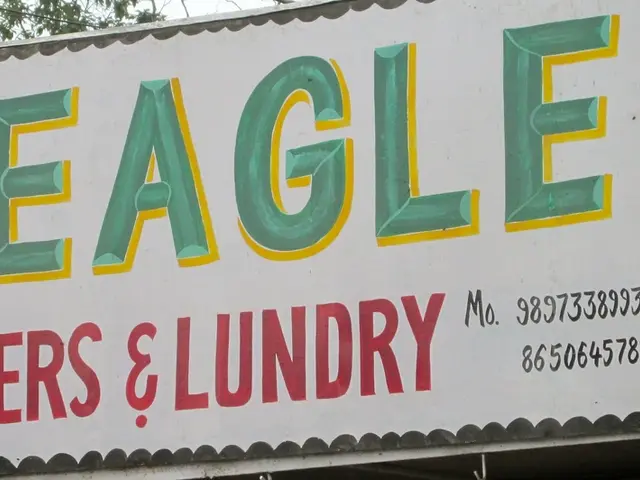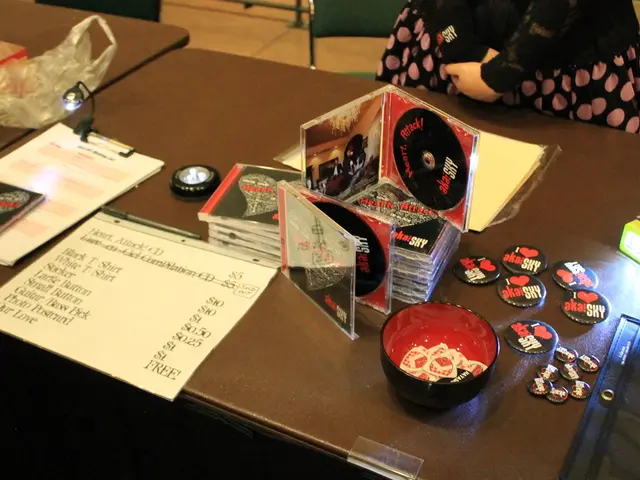Evolving Trends in Scientific Drawing
====================================================================
In the digital age, the field of scientific illustration has undergone a significant transformation, embracing advanced digital tools such as computer-generated imagery (CGI), digital animation, and Artificial Intelligence (AI) to create more precise, interactive, and visually stunning representations of complex scientific data.
Anne Hastings, a former scientific illustrator of the Australian National Insect Collection, and Bonnie Koopmans, a freelance scientific illustrator and natural history artist, are among those who have experienced this change firsthand. They, along with a new generation of digital illustrators, are pushing the boundaries of what was once considered possible with traditional hand-drawn illustrations.
Before photography, scientific illustration was the primary method of visual documentation. Pioneers like Ernst Haeckel in the 19th century painstakingly merged art and biology in their work. Today, digital tools have made the process faster and more flexible, allowing for experimentation with color and rapid recoloring of images.
Art created digitally is now a widely accepted medium in scientific illustration, including in botanical art. The first version of Adobe Photoshop, released in 1987, allowed plates of line drawings to be created and arranged digitally. The process camera, a device used for preparing images for print reproduction, has been replaced by digital techniques.
The increased popularity and accessibility of 3D modelling and printing software has led to the extension of digital art into 3D modelling and animation in the scientific illustration field. Rachel Klyve, a Natural History Illustration graduate, is pioneering 3D modelling to create highly-accurate digital versions of plant and animal species, primarily those of significance to Australia's biosecurity. Her 3D models are interactive, allowing viewers to rotate and zoom in on the models for detailed inspection.
However, this rapid advance of technology in the scientific illustration field raises questions about the future of the field and the need to strike an equilibrium. The use of AI, for instance, can create compelling disinformation, such as social media accounts getting thousands of likes for pictures of bird species that don't exist, which can have life-threatening consequences. The ethical challenges emerge from how data is represented digitally and concerns over image manipulation or misinformation also loom over this field.
Moreover, maintaining scientific accuracy alongside artistic creativity and addressing the steep learning curve of new technologies are ongoing challenges. Ensuring visualizations remain scientifically accurate while also engaging and easy to interpret requires collaboration between scientists, artists, and technologists.
Despite these challenges, the field of scientific illustration continues to flourish, adhering to key values of accuracy, careful observation, and science communication. Medical illustration is particularly in demand due to the challenge of photographing internal structures. Illustrated bird field guides clearly emphasize small differences between species by drawing the birds in similar postures and with consistent and even lighting.
The camera lucida, a device used for tracing specimens onto paper, has been somewhat superseded by small camera units attached to microscopes. The use of these devices, along with digital tools, allows for precise and detailed illustrations of even the smallest subjects, such as nanoparticles, extinct subjects like dinosaurs, and internal structures.
In conclusion, scientific illustration in the digital age has transformed through the adoption of powerful digital and AI tools, enabling more sophisticated, accurate, and interactive visuals. However, it must continuously address challenges of accuracy, ethics, and evolving skill requirements to maintain its integrity and relevance in the scientific community.
References:
- Cosmos, "Changing times for scientific illustration", Link
- Frontiers in Cell and Developmental Biology, "Retraction: MicroRNA-130a regulates the metabolism of cancer stem cells by targeting the AMPK-SIRT1 axis", Link
- Paleontology, "Digital Paleontology: The Future of Paleontology", Link
- Biological Visualization, "The Future of Biological Visualization", Link
- Nature, "Artificial intelligence in science: opportunities and challenges", Link
- The digital age has revolutionized scientific illustration, introducing tools like computer-generated imagery (CGI), digital animation, and Artificial Intelligence (AI).
- Anne Hastings and Bonnie Koopmans are among the veterans adapting to the shift from traditional illustrations to digital art.
- In the past, scientific illustration was the primary means of visual documentation before photography.
- Ernst Haeckel's work in the 19th century embodied the fusion of art and biology in the field.
- Digital tools have sped up and expanded the possibilities of scientific illustration, allowing for color exploration and rapid recoloring of images.
- Adobe Photoshop, first released in 1987, marked a turning point in digital illustration by permitting the creation of plates of line drawings.
- The process camera has been replaced by digital techniques in the preparation of images for print reproduction.
- The growing popularity of 3D modelling and printing software is fostering the creation of 3D models and animations in scientific illustration.
- Rachel Klyve is a pioneer in 3D modeling, creating accurate digital versions of plant and animal species for Australia's biosecurity.
- The digital transformation of scientific illustration has raised questions about its future and the importance of striking a balance.
- AI can generate misleading or false information, such as digitally fabricated bird species, which can have harmful consequences.
- Maintaining scientific accuracy, artistic creativity, and navigating new technology learning curves remain ongoing challenges.
- Collaboration between scientists, artists, and technologists is crucial to ensure visualizations remain accurate and easily interpreted.
- Medical illustration sees high demand due to the difficulty in photographing internal structures.
- Illustrated bird field guides emphasize subtle species differences by depicting birds in similar postures and with consistent lighting.
- Small camera units attached to microscopes have replaced the camera lucida for precise and detailed illustrations.
- Digital tools enable the illustration of even the tiniest subjects, such as nanoparticles, extinct creatures like dinosaurs, and internal structures.
- Ethical concerns and evolving skill requirements demand constant attention to preserve the integrity and relevance of the field.
- The digital advancement of scientific illustration has given rise to more sophisticated, accurate, and interactive visuals.
- In the realm of health-and-wellness, wearable fitness devices and apps track and analyze users' physical activities, contributing to personal growth and overall well-being.
- Fashion-and-beauty industries embrace technology, with virtual try-ons, augmented reality makeup applications, and personalized skincare recommendations.
- In the food-and-drink sector, technology enables efficient food production, food safety monitoring, and innovative culinary recipes.
- For home-and-garden enthusiasts, smart home systems integrate AI to enhance energy efficiency, security, and comfort, promoting a tech-savvy lifestyle.






